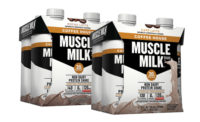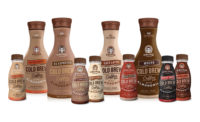Nestled in Plymouth, Wis., (population 8,652) — the “Cheese Capital of the World” — Sartori Cheese sits at the crossroads of America’s heartland where grass-fed dairy cows are pivotal to processing, packaging and selling 25% of the country’s cheese. In 2021, there were 6,932 herds milking on dairy farms throughout Wisconsin, according to the United States Department of Agriculture (USDA) Statistics Service. As the top cheese-producing state, Wisconsin churns out more than two-and-a-half billion pounds of cheese annually followed by California at No. 2.
Since fresh milk is pivotal to fresh cheese, and it takes 10 pounds of milk to produce one pound of cheese, it’s not surprising that Wisconsin’s 1,290 licensed cheesemakers use about 90% of Wisconsin's milk supply, the Dairy Farmers of Wisconsin states. Additionally, 47% of all specialty cheese made in the United States originates from Wisconsin.
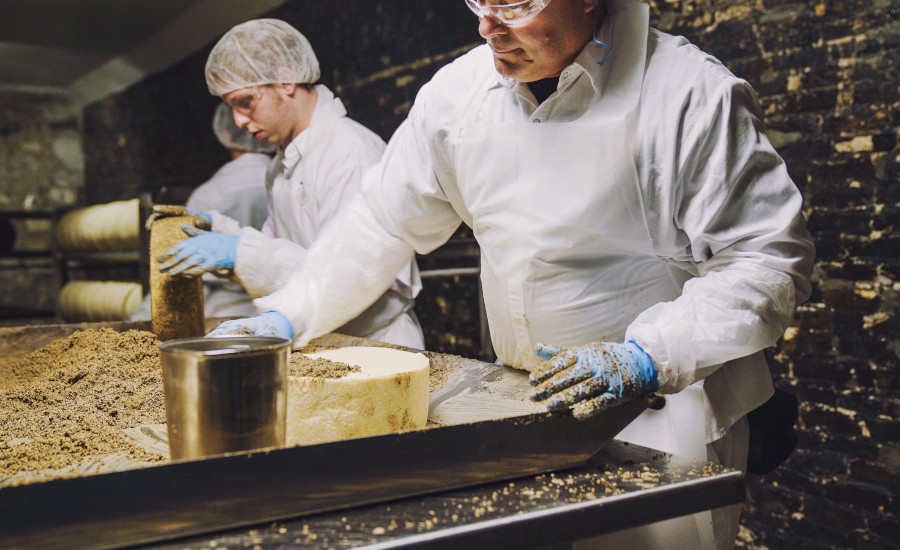
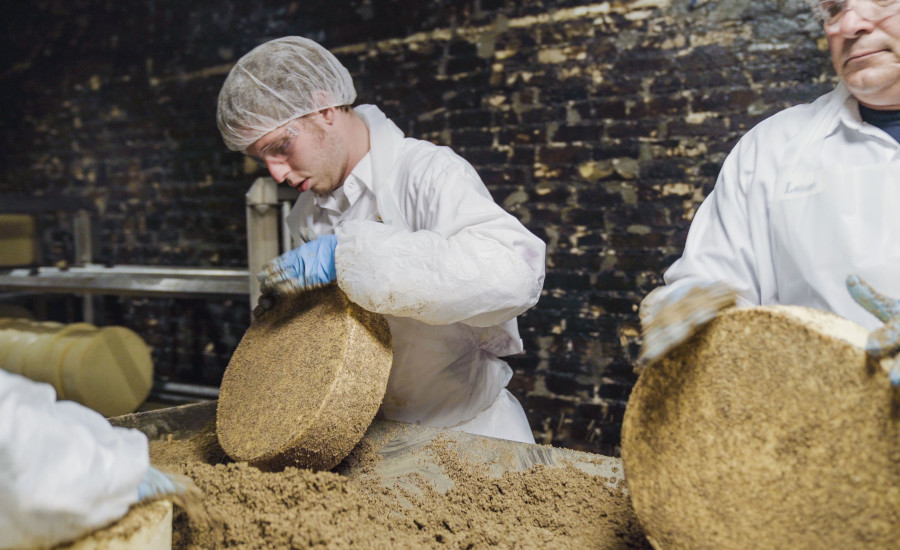

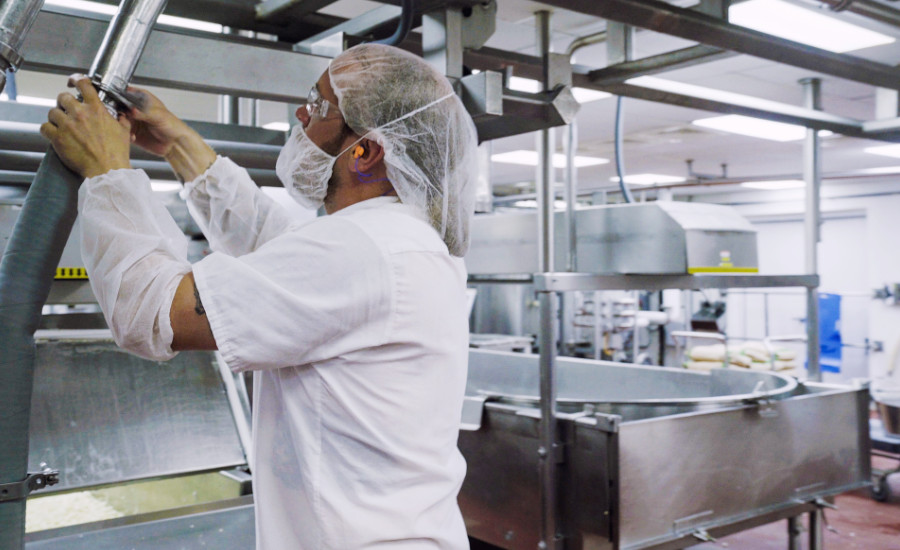
Founded in 1939, Sartori Cheese, under the leadership of fourth-generation President Bert Sartori, produces 22 SKUs of “artisan cheese for all” in the following segments; Parmesan (Classic, SarVecchio and Tuscan Blend); Asiago (Classic and Rosemary & Olive Oil); Cheddar (MontAmoré, Old World, Farmhouse and its new Cherrywood Smoked); and BellaVitano, a cow’s milk cheese that begins like a Parmesan and ends with hints of melted butter, soaked or hand-rubbed in Merlot, Espresso, Black Pepper, Raspberry Ale, Tennessee Whiskey, Chardonnay, and Garlic & Herb, its newest varietal.
“Sartori is unique in that we really pride ourselves on flavor leadership. We are utilizing our cheesemaking depth of knowledge to produce Hard Style Italian cheese while constantly looking to create American Originals,” says Sartori Master Cheesemaker Ken Kane during an onsite interview.
“Our BellaVitano and MontAmoré are great examples of this. BellaVitano has layers of complexity that are accentuated by our hand-finished offerings. Our Merlot BellaVitano opens the earthy sweet tones of the cheese, [while] Black Pepper BellaVitano opens up a subtle fruit and savory notes.
“At the end of the day, it is about the cheese, and we strive to create the very best,” Kane continues. “… We still use our hands, we use local milk, and we live by the company’s core values of Integrity, Family, Authenticity, Humility, Commitment and Ingenuity.”

The art of cheesemaking
Like fine wine, the aging of Sartori’s premium, world-class cheeses takes a considerable amount of ingenuity and patience, Kane notes. The cheese that bears the Sartori name that has been carefully crafted for 83 years isn’t produced in a hurry. In fact, it takes months for MontAmoré and BellaVitano varieties to nearly two years in the case of SarVecchio Parmesan, which is washed with olive oil and then “extra-aged” for at least 20 months, he explains.
“This aging process is what is creating those flavor profiles through the breakdown of fat and proteins,” Kane reveals. “I love when we have tours and people come through the plant when we are making one of our American Originals, MontAmoré. I have them feel the young curd shortly after it is cut. You can feel the delicate nature of the protein structure and the whey and fat in the curd.
“Next, try the curd after the whey is removed,” he continues. “It firms up but is still very malleable. Taste the curd after salt and there is more firmness to the bite along with the characteristic ‘squeak’ as you bite through the protein (aged cheese won’t have that since the protein will break down).”
At the conclusion of each tour, visitors are, of course, able to sample the aged, finished cheese to better understand the steps needed to make fresh, premium Wisconsin cheese.
“The journey that [the cheese] undergoes is staggering,” Kane explains. “No longer do we have a salty, squeaky curd; we have fruity and tangy notes coupled with a sweet savory taste. The structure is crumbly with a great level of meltability. That deliciousness, the Sartori way, takes time and patience.” (See sidebar).
The journey to great cheese
Sartori Master Cheesemaker Ken Kane pinpoints the cheesemaking process in great detail, starting with the delivery of high-quality, fresh cow’s milk from roughly 100 family farm partners located within a 50-mile radius of Sartori plants. The steps are:
Kane concludes: “Our cheddars are cut into bricks from the whole block; our grating and shred applications cut down the block to be converted. It fits the ‘mold’ for whatever our patrons are looking for — we are cheesemakers to our soul, and, like we have done for 83 years, maintain the passion to give our patrons the best cheese we possibly can.”
A legacy of ingenuity, craftsmanship
Innovation, an attention to detail, and the ability to tinker and experiment are crucial to creating “the next best flavor” says Jackie Seibel, Sartori’s vice president of product development and quality who’s been with the company since 2019.
“We focus on producing delicious flavorful cheeses,” the food scientist explains. “Working with delicious cheese can be challenging. We focus on our patron’s flavor experience first. If you’ve ever tasted BellaVitano, you also know it has crystals and is quite crumbly. The texture can make it quite difficult to cut into wedges, but we believe the flavor experience is worth the effort. We strive to be leaders in flavored specialty cheeses by infusing our cheeses like BellaVitano with flavors like Tennessee Whiskey or Garlic & Herb.”
Annually, Sartori produces its artisan cheese out of three cheesemaking facilities — East Main, West Main, which also handles converting (cutting and packaging) in Plymouth, and a 100,000-square foot cheesemaking and converting facility in Antigo, Wis.
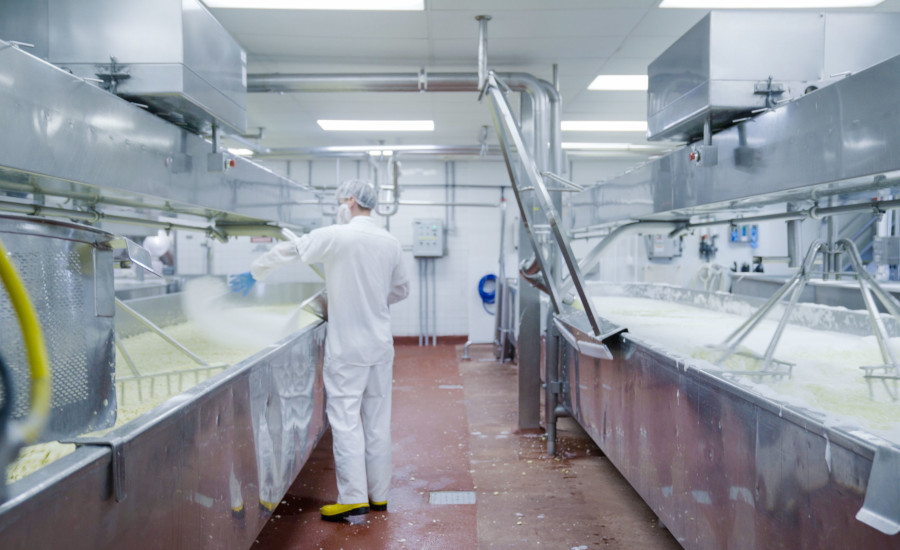


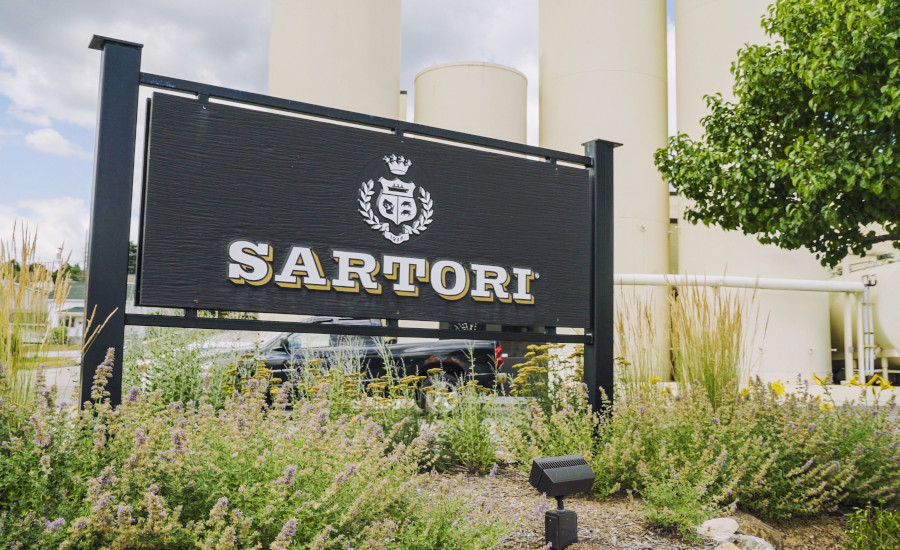
Noting that the aging of artisan cheese takes patience, expertise and craftsmanship, demand for the company’s cheese continued to expand within the ingredient, foodservice and retail private-label segments, necessitating the purchase of the Antigo Creamery in 2006.
The Antigo Creamery, with the ability to cut and package 20-pound wheels of cheese, fostered the company’s expansion into retail and deli markets. The 2008 creation of BellaVitano, a Sartori Original, and its expanding portfolio of uniquely flavored cheeses, also added distribution muscle, Seibel says.
“Our most recent large expansion in 2021 added 22,000-square-feet to one of our converting facilities in Plymouth, Wis., which is helping to support growth of our cheese packaging operations,” she adds.
Packaged and sold in 5.3- and 7-ounce wedges, 7-ounce and 5-pound bags of shredded cheeses, and five-pound quarter wheels and 20-pound wheels, Sartori products are available in all 50 states, the European Union, Italy and more.
Harkening back to the company’s founding in 1939, ingenuity has been a key driver. For example, in 1942 and 1946, when S & R Cheese Co. was still in its infancy, the company invented and patented cheese curd mixing and stretching machines which provided consumers across the globe with consistently higher-quality Italian cheese.
“These patents were important and impactful for the production of soft Italian cheeses such as Mozzarella and Provolone,” Seibel reveals. “Proper curd stretching is important to obtain the stringiness observed in pasta-filata cheese. While Sartori may not use the same equipment today, our patents provided a base to help spur other future innovations in pasta-filata cheese manufacturing.”


.jpg?height=200&t=1673539888&width=200)
